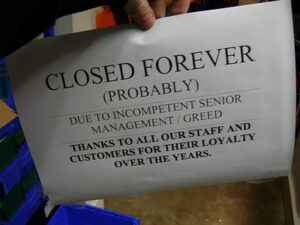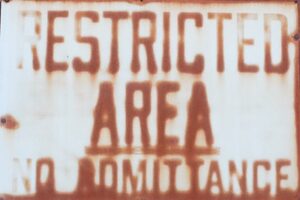In 2001, the City of Escondido built the Reidy Creek Golf Course, an 18-hole golf course that also features disc golf and foot golf courses; a clubhouse; a pro shop; and a rental venue for meetings, weddings, and other special events. The City issued $6.3 million in tax-exempt bonds to construct the facility. Twenty-one years later, the City still owes $3.3M on the bonds.
The City planned to use the golf course’s revenues to pay the bonds. It was going to be great. Except, of course, that’s not the way things worked out. Between 1990 and 2003, about 3,000 new golf courses opened in the United States. Around the same time Reidy Creek opened, people started drifting away from the game of golf. And not surprisingly, since the mid-2000’s, about 3,000 golf courses in the United States have closed.
Since at least 2004 – just three years after the Reidy Creek Golf Course opened its doors, the City of Escondido has transferred revenue from its General Fund to pay for Reidy Creek’s chronic revenue shortfalls. In 2004, Escondido transferred about $120,000 from its General Fund to pay the golf course debt. Currently, Escondido transfers about $375,000 per year from its general fund, money that certainly could pay for more pressing concerns.
Earlier this month, the City of Escondido replaced the management company that operated the golf course for two decades. The new company charges a lower management fee and will transfer replacement golf carts from other courses it manages to shore up the course’s 20-year-old golf cart inventory, which the City cannot currently afford to replace. (Ironically, the City could buy about 25 golf carts with the $375,000 it currently must devote to the golf course’s debt service.)
Additionally, the new management company has new revenue plans. They include hosting concerts, cross-country runs, and disc golf tournaments.
Strictly speaking, the new revenue plans for the golf course do not involve golf.
Revenue plans don’t account for risk
The original concept (the golf course) could not generate enough revenue to pay the bond debts on the property. Ever.
The City voluntarily saddled itself with 30 years of debt for a facility that was never going to break even, much less turn a profit. If the bond deal is structured like most long-term bond deals are, the longest-term bond deals have the highest interest rates. In other words, the City has an uphill slog in the last 8 years of this deal.
The residents – whether they’re golfers or not – still pay for the golf course that was supposed to pay for itself. The City, which should have assessed the risks here, couldn’t see the hole it was stepping into. Fittingly, Escondido wound up with an albatross, just not the 3-under-par kind.
This is what happens, however, when elected officials are so eager to run a quasi-private business that they fail to recognize and address the risks they’re signing the taxpayers up for.
The WCC Trustees have made the same error. The optimistic revenue plans for the Health and Fitness Center never materialized. The business plan (if there was one) failed to account for building capacity; limits to community interest; the pandemic; inability to raise costs above market rate; shoddy construction; and massive, expensive repairs to the facilities. The WCC plan all along was to keep jamming more people into the facility, and it was somehow just going to work. Last year, WCC transferred more than $4M in pandemic relief funds to cover the HFC’s losses. If not for the federal funds, WCC would have been withdrawing that money from its reserves to pay off the facility’s unrelenting debts.
Worse, they’re willing to repeat this same defective plan with a hotel. This isn’t leadership. It isn’t responsible administration. And it sure as hell isn’t Trustee oversight.
Photo Credit: Tord Sollie , via Flickr












































